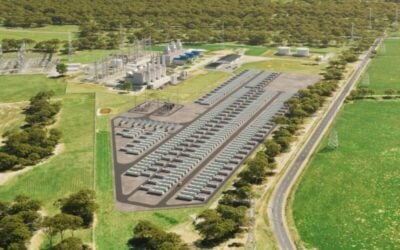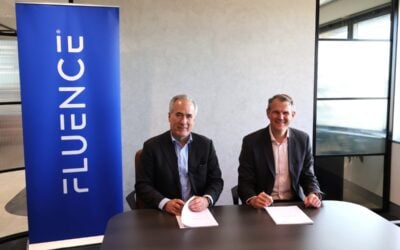Energy storage technologies are not the “silver bullet” they have sometimes been hyped as, but nonetheless have a crucial role to play in a decarbonised electricity system, according to the International Energy Agency (IEA).
The IEA has published a technology ‘roadmap’ for energy storage, covering electricity and thermal storage systems.
Enjoy 12 months of exclusive analysis
- Regular insight and analysis of the industry’s biggest developments
- In-depth interviews with the industry’s leading figures
- Annual digital subscription to the PV Tech Power journal
- Discounts on Solar Media’s portfolio of events, in-person and virtual
The document attempts to address the three questions of where energy storage technology is today, what long-terms goals for energy storage development and deployment might be and finally what priority actions are required to put increased development and deployment of energy storage into practice.
The roadmap is aimed at increasing stakeholders’ understanding of electrical and thermal energy storage and how the corresponding technologies can be deployed at various points along transmission and generation systems, IEA said.
In addition, the roadmap attempts to point the way towards success in accelerating the deployment and development of storage technologies in the short and long term by identifying actions to support the embryonic industry. The IEA identifies ‘short term’ as within 10 years while ‘long term’ represents the period up to 2050.
The report identifies the current and possible future roles of energy storage, including the integration of higher levels of variable renewable energy penetration, supporting an increase in electricity consumed nearer to generation sources and making grids more flexible, reliable, resilient and stable.
Speaking at a webinar event to launch the roadmap on Wednesday, IEA director of sustainable energy policy and technology Didier Houssin, energy demand technology unit head Cecilia Tam and energy systems engineer and consultant Melissa Lott discussed some of the roadmap’s key points. Houssin was also scheduled to present key findings from the report at the Energy Storage conference and exhibition, taking place in Düsseldorf, Germany, from 25 to 27 March.
The IEA’s roadmaps on various technologies exist, according to Houssin, with the aim of developing a strategy to “accelerate the development and deployment of a given technology by 2050”.
Key recommendations made in the roadmap include the need for better data sets to quantify the need for storage and its potential uses. According to the IEA, improved global data sets would be useful in tracking progress within the industry and would provide better global and regional potential and targets. The roadmap also provides ‘technology timelines’ which forecast the expected levels of progress in the three scenarios modelled.
Houssin said: “The first thing to do is to provide the right market signals, to provide the right incentives, to encourage innovation and provide the right contribution to storage in its different applications. The second thing is, the more we will go to an electricity system that has more distributed generation, that will really provide strong incentives to develop more solutions for electricity storage.
“The third one is about the need for innovation, because we need a lot of R&D to develop new solutions, maybe obtain some breakthroughs. So it’s a mixed message but also a call for more R&D and more reflection in terms of the right regulatory framework that will incentivise more investment in storage facilities. Again it’s not a solution for tomorrow but in a long term vision of a decarbonised electricity system, we are definitely convinced that storage has a very important role to play.”
Houssin concluded by saying: “On one side, there is a lot of hype on energy storage as a ‘silver bullet’ solution for all problems with power markets. We’d rather say that it is one option among others and in terms of cost competition, not all technologies are sufficiently cost effective today to be presented – as they too often are – as a ‘silver bullet’ to solve all the problems of power systems.”
The webinar was opened to questions from attendees. PV Tech asked if the forthcoming IRENA roadmap on energy storage, announced earlier this month, was comparable to the IEA document, to which it was confirmed that IRENA members contributed to the IEA report and there was no possibility of duplication between the two reports.
PV Tech also asked, in light of changes to political support for solar, with financial support in some territories such as Spain and the Czech Republic being cut with often severe consequences, what the likelihood was of such a situation emerging in storage and how a growing energy storage industry could be protected from the possibility of similar political changes of heart.
Cecilia Tam and Melissa Lott said that since the aim of support for storage, at this stage in its development, would be to encourage early adoption of storage and not mass deployment, support schemes were likely to be different in nature to those for solar. The best protection for the energy storage market, according to Lott, would be to allow storage providers to be compensated for providing services in an economic fashion.
“It’s a bit different in many cases; the policies we’ve had to deploy solar technologies such as feed-in tariffs are not really the same as we’ve seen for storage technologies where a lot of the public focus or a lot of the public investment is focused on early stage R&D to help them prove and demonstrate these technologies,” said Tam.
“In terms of the incentives that we’ve seen for energy storage, they have been focussed more on developing technology, getting the cost of technologies down.”
Some technology analysts including Lux Research and Navigant have said that while lithium-ion will dominate the battery space in the next five to 10 years, in the long term, costs are not likely to fall enough for Li-ion to remain dominant beyond that. PV Tech asked what could be done to ensure spending remained in R&D to find and develop alternatives, instead of being spent on scaling up Li-Ion production for short term returns for the handful of companies already in the market.
Melissa Lott answered: “In the roadmap … we don’t pick out one specific company or one specific design and we do recommend a combination of not only supporting the more mature battery technologies that are out there, helping them get up to scale in terms of production, but also supporting the less developed battery technologies that maybe haven’t matured on that scale.”
PV Tech also asked whether the issue would come back to the need to add an economic value to the services storage can provide, rather than commoditising the storage product.
“The value of storage is the service it can provide in the energy system. It does things that we value and so a big key to accelerating the deployment that we’re presenting here is paying it for the services and applications it’s used for. That is at the heart of the discussion in this roadmap. While we certainly recommend that technologies need further development in many cases, we also recommend that people take a hard look at the energy market structure in their region if they want to effectively incentivise energy storage in the long run,” said Lott.
Didier Houssin, IEA: Storage has a “crucial role to play” but is not a “silver bullet solution for all power market problems.” Image: wikimedia commons user: RudolfSimon.






